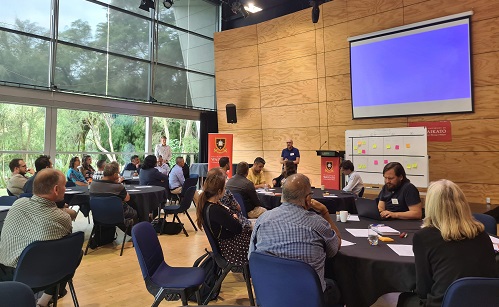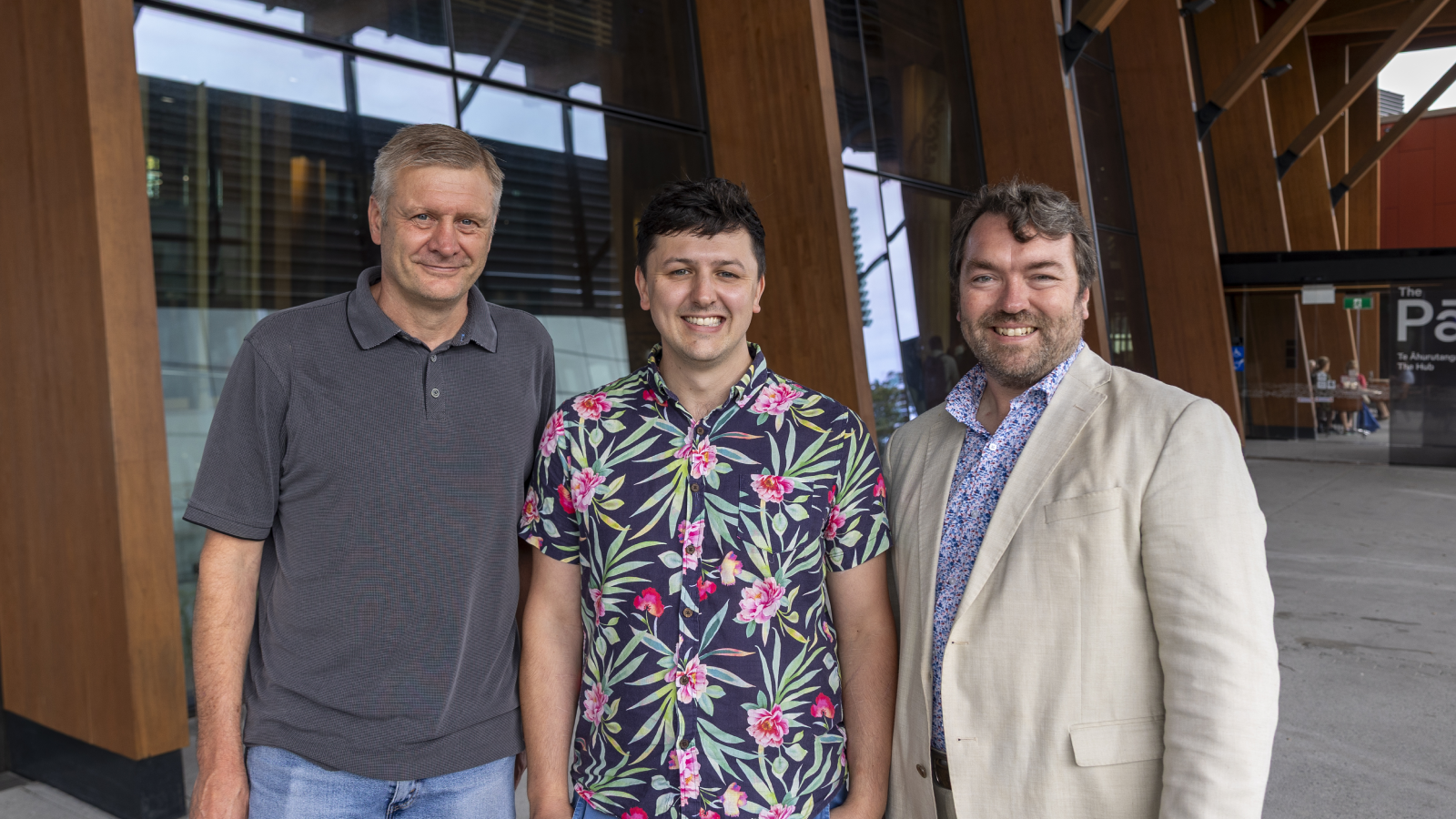The platform, TAIAO (Time-Evolving Data Science / Artificial Intelligence for Advanced Open Environmental Science), brings together huge data sets, collected in real time from New Zealand’s environment, and makes them available on one platform that researchers and scientists can use.

Professor Albert Bifet presents at the TAIAIO workshop, held in February at the University of Waikato.
It was launched in March 2020, as part of a $13 million project funded by the Ministry of Business Innovation and Employment, and is a collaboration between the University of Waikato, the University of Auckland, the University of Canterbury, MetService and Beca.
The University of Waikato hosted a workshop about the platform in February, where participants were shown how big data and machine learning are already solving some of our toughest environmental challenges.
Representatives from the Cawthron Institute, Department of Conservation, Manaaki Whenua — Landcare Research, and Waikato Regional Council were shown how TAIAO projects are using big data and machine learning to address predator management, map Kahikatea stands using aerial images, predict flooding hazards on Coromandel rivers, and detect cyanobacterial blooms on Lake Waikare.
Director of the University of Waikato Environmental Research Institute, Professor Karin Bryan, says TAIAO will be transformational in how scientists and communities tackle issues like climate change and environmental management in the future.
“I think we are on the brink of something really transformational. This project will allow us new ways of analysing the environmental data and sharing knowledge through a platform that allows researchers and scientists to work collaboratively with all the available data sets we have, far more efficiently,” she said.
So far, the project uses aggregated wave and atmospheric forecast data from MetOcean/MetService, the Google’s Earth Engine Data Catalog, which captures 40 years of historical imagery and scientific datasets and is updated daily. It also takes in wave buoy data collected by MetOcean and uses a Sentinel Satellite snapshot of the Waikato region.
The project will run over seven years and the next phase is to get feedback from platform users.
Professor Albert Bifet from the University of Waikato leads the initiative and says TAIAO, which is also Māori for the natural world or environment, is an exciting development and now it was time for New Zealand’s brightest minds to test the platform.
“This project brings together PhD students, post-docs, data scientists, environmental scientists and software engineers who are all focused on developing new methods for analysing data and sharing new knowledge with the aim of solving some of the biggest challenges we face.”
He said the platform would allow researchers to develop new machine learning and artificial intelligence that could deal with the huge data sets, in real time, and then make the information available to anyone who wished to access it.
The project also recognised the depth of expertise at the University of Waikato around AI and machine learning, including the recent development of another application River, and will provide an interactive development space for experts to share their knowledge and collaborate with others.
“We don’t often get to see or understand the workings behind a new AI or machine learning application so River will allow our experts to share that knowledge.”
To find out more visit the TAIAO website.
This research aligns with the following United Nations Sustainable Development Goals:




